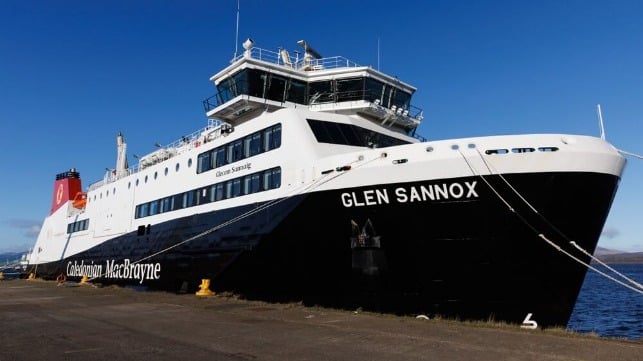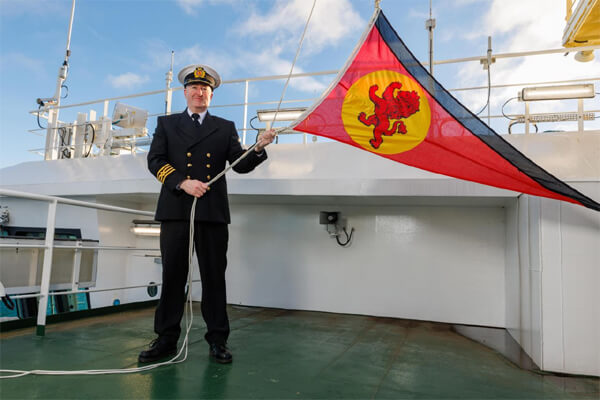Troubled Scottish Ferry Glen Sannox Delivered After Ten Years to CalMac

Scottish shipbuilder Ferguson Marine completed the handover today, November 21, of the first dual-fuel LNG ferry built in the UK to its owners nearly ten years after the construction order and six years behind schedule. Glen Sannox (7,300 gross tons) became a political embarrassment to the Scottish government and a liability as costs ballooned and the vessel fell further and further behind schedule.
Ferguson Marine issued an update at the beginning of the week reporting that Glen Sannox had received the mandatory certification from the Maritime and Coastguard Agency (MCA) and Lloyd’s Register. The full regulatory approval came after acceptance sea trials in October and includes its passenger certification, essentially meaning the ferry can now commence service on the Arran route.
Last night, November 20, they began executing the final legal paperwork to deliver the vessel to the government-owned corporation CMAL which in turn charters the vessel to Caledonian Maritime Assets Limited (CalMac) for operations. Master Michael Mackinnon today raised the red ensign signifying the completion of the handover.
"The Glen Sannox will provide resilience to the fleet delivering vital lifeline services to islanders and I am encouraged that the Scottish government’s wider program to procure six new ferries by 2026 has taken another major step forward," said Scotland’s Deputy First Minister Kate Forbes.

Master of Glen Sannox raising the flag completed the handover today in Scotland (Ferguson Marine)
The company has been struggling to manage an aging fleet and maintain service across Scotland. The government contracted for the Glen Sannox and a sistership Glen Rosa in 2015 hailing them as a cornerstone of the revitalization of the company and modernization of the service.
Both ships were scheduled to be delivered in 2018 at a combined cost of £97 million ($123 million). However, the project became embroiled in controversies resulting in cost overruns and delays. Costs for both ferries ballooned to over £400 million ($507.4 million).
Ferguson Marine which had emerged out of administration as the last Scottish shipbuilder was forced back into administration and required a government loan to resume work in 2022. The project ultimately would cost the jobs of both Ferguson Marine CEO David Tyderman who was removed from his role in March 2024 and CalMac CEO Robbie Drummond who stepped down in April 2024. Opposition political leaders have called for additional resignations over the failures of the project.
The shipyard blamed a flawed design concept by CMAL, repeated change requests, and supply issues for many of the problems. Part of the delays were also attributed to difficulties in completing the ferry’s LNG power system.
Two months ago, she finally began sea trials for the LNG system and then also conducted a test docking at Arran. She was finally berthed at Inchgreen in preparation for the final trials and certification.
At a length of 102 meters (336 feet), Glen Sannox will provide expanded capacity on the run to Arran. It is also the first new large ferry for operations on the west coast of Scotland in nearly a decade. It will be capable of operating on LNG and marine gas oil. The ferry can carry up to 852 passengers plus at least 127 cars or 16 heavy goods vehicles, or a combination of both.
The plan now calls for a final period of maintenance and crew training as well as further inspections to all be completed in December. CalMac said it expects Glen Sannox to begin commercial service in January taking over the route from the 41-year-old ferry MV Isle of Arran. The sistership, Glen Rosa, is still under construction with Ferguson targeting a September 2025 handover.
